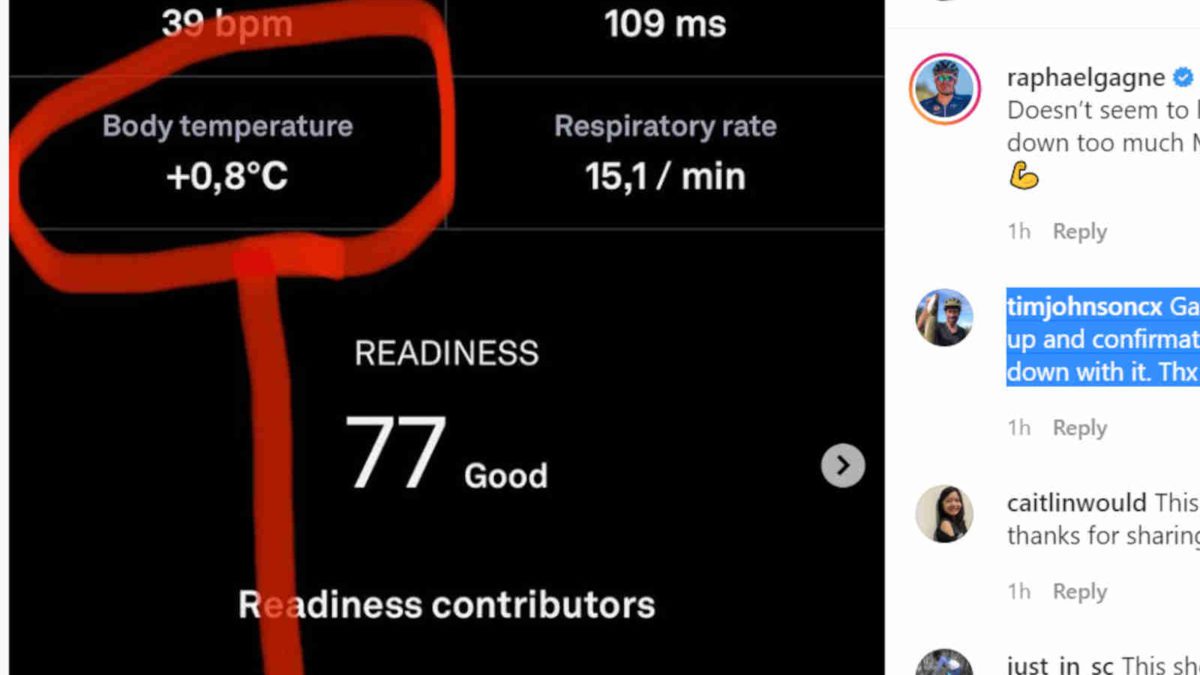Could your fitness tracker help diagnose COVID-19?
Some cyclists are noticing signs before they test positive
 Photo by:
Michael Woods/Instagram
Photo by:
Michael Woods/Instagram
The data for COVID-19 continues to evolve, daily. Experts are adapting rules about self-isolation, as well as honing in on the period in which people are contagious. On Tuesday, Canadian pro cyclist Michael Woods noticed something on his Oura fitness tracker ring.
The Israel-Premier Tech rider posted that “The entire Woods family got taken down by COVID-19 a few weeks ago. Fortunately we were fully vaccinated and the symptoms weren’t bad. Interestingly my Oura ring picked up the symptoms before I felt them. Super impressed with this technology!”
What Woods noticed was that his temperature had gone up almost a full degree before he started experiencing symptoms. Another cyclist commented that in his case, one day before he tested positive, his resting heart rate was higher than normal.
The idea is not entirely new. In 2020, Stanford University began a study to see if smart watches and fitness trackers could offer help in predicting infection.
According to a study in Nature Medicine, a group of researchers tested a real-time COVID-19 infection alerting system that relied on the data that smartwatches and activity monitor wearables could collect. They conclude that by using that system, they could detect 80 per cent of pre-symptomatic and asymptomatic infections.
Most people who get COVID-19 will experience a fever, so a higher heart rate would make sense.
Former professional cyclist Tim Johnson echoed Woods’s experience, saying that his fitness tracker “Gave me the same heads up, and confirmation when I came down with it.”
For the majority of people who experience the Omicron variant, symptoms usually begin with a sore throat, chills, fever and cough. Experts now believe that the omicron variant has increased the speed in which COVID-19 operates, including the incubation period, as well as the time between exposure and the start of symptoms.
In terms of exposure time to when you actually experience symptoms, especially with the Omicron variant, things seem to come more rapidly. The CDC says that its guidelines were updated to reflect growing evidence that suggests transmission of COVID-19 and that “often occurs one to two days before the onset of symptoms and during the two to three days afterward.”
Michael Woods didn’t experience symptoms but his fitness tracker did display a higher body temperature, which could be the result of the viral infection. It’s always good to listen to your body, but could fitness trackers play an important part with both athletes and non-athletes in predicting a possible COVID-19 infection?
